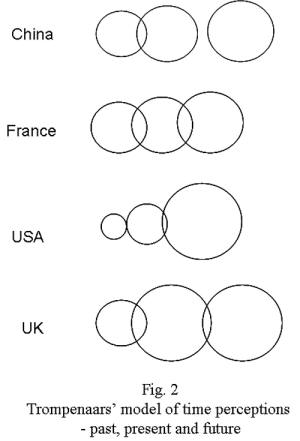 |
 |
|
Trompenaars (1993)Management > Comparative Management > Lectures > Independent Research > Trompenaars > The Questions > More Questions > Time
TimeAll cultures even perceive time in a different manner (Fig.2).
As can be seen from the diagram, China and France are past-orientated cultures, viewing the the past as important as the present and future. Their perceptions of time overlap, making them synchronistic America and Britain have a slightly more sequential view of time and are future-orientated cultures. The US sees the past as insignificant and the future as most important, while Brits view the present and future as equally important. Past-orientated cultures value history and show respect for ancestors and age. Future-orientated cultures talk much of the future, are aspirational, focus on planning, value the young and exploit the past to benefit the future. Sequential cultures do one thing at a time, can measure time, keep appointments strictly and prioritise schedules over relationships Synchronistic cultures do more than one thing at once, do things by approximate times, and relationships are prioritised over schedules
|
|

